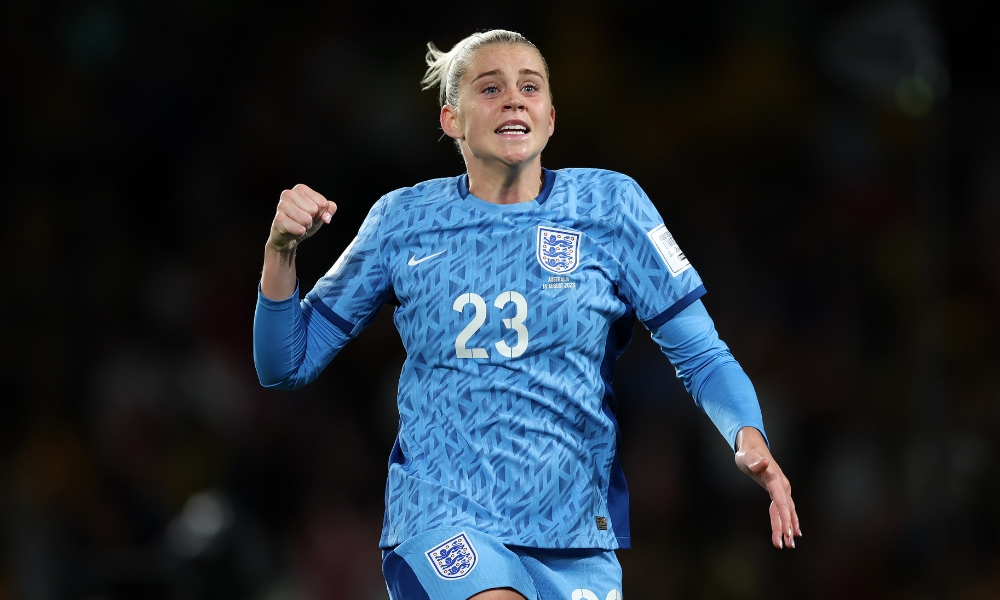[ad_1]
- Average watch time for women’s sport increases 28% YoY as total viewing hours rises 19%
- 5m watch 3+ minutes of Women’s Ashes
- Audience for Netball World Cup climbs to 5.6m
Record viewership for the 2023 Fifa Women’s World Cup has contributed to a dramatic increase in UK broadcast audiences for women’s sports, according to the Women’s Sport Trust (WST).
The charity’s research, with data and analysis from Futures Sport & Entertainment, revealed that the average time spent watching women’s sport has increased by 28 per cent and total viewing hours are up by 19 per cent year-on-year (YoY).
People have also spent nine hours and five minutes per viewer (data up to 20th August 2023) watching women’s sport, up from a previous high of seven hours and five minutes in 2022 at the equivalent point of the year.
The Women’s World Cup was a standout, seeing the highest viewing hours ever for a global women’s soccer tournament, with people in the UK watching it for six hours and 45 minutes, according to the study. The tournament also attracted a new audience with the highest percentage of female viewers (42 per cent) and the highest number of under-16 viewers (seven per cent) on record.
The WST added that unique audiences are coming to the biggest moments of women’s sport in large numbers. Notably, 11.5 million viewers of the 29.9 million people who watched the Women’s World Cup on TV did not watch the Fifa men’s World Cup in Qatar in 2022, with 12 per cent of that audience watching the women’s tournament on more than 11 occasions.
In addition, 8.9 million people have watched at least three minutes of any live games from the Women’s World Cup, the Women’s Super League (WSL) and Uefa Women’s Euro 2022.
The WST also found that in addition to a seven per cent increase in total coverage hours (more than 6,000 hours) of women’s sports across pay-TV and free-to-air (FTA) channels more than two million people watching those broadcasts on pay-TV so far this year hadn’t done so in 2022.
Furthermore, the data showed significant growth across other women’s sports properties, with 6.5 million people watching three minutes or more of this year’s Women’s Ashes, compared to 3.8 million for the 2019 edition. The average viewer also watched three hours of coverage, 131 per cent higher than in 2019, and the Women’s Ashes brought in 4.5 million new viewers for the England Women team.
Also noteworthy are the figures showing that 37 per cent of viewers of the 2023 Women’s Ashes had not watched any other women’s sports, resulting in 2.4 million new women’s sports viewers. The WST adds that these viewers had a higher 16 to 34 and ethnic minority group percentage than those who had previously watched women’s sports this year.
Away from cricket and soccer, England Roses securing their first ever win against the Australian Diamonds at a Netball World Cup and reaching the final for the first time led to an increase in viewers of the 2023 tournament. According to the research, the audience increased from 4.5 million in 2019 to 5.6 million in 2023. The proportion of female viewers on TV also grew from 47 per cent in 2019 to 56 per cent in 2023.
Beyond viewership stats, the study found that cosmetics and personal care brands advertised most around the Women’s World Cup match coverage on commercial broadcaster ITV, with the WST noting a new opportunity for brands to target a fresh sporting audience.
“The visibility of women’s sport continues to grow at a phenomenal rate, due in the main part to the unbelievable progress of our female athletes on the global stage,” said Tammy Parlour, chief executive of the WST.
“The most pleasing part of this research is the identification and size of the unique audiences being drawn to women’s sport. We look forward to seeing how this definitive data will continue to attract more investment over the coming months – driving the value of women’s sport up further.”
SportsPro says…
These latest WST numbers continue the positive trends seen in the last few years around women’s sports and sooner rather than later they need to start translating into increasing broadcast rights fees for those properties.
Fifa’s attempt to strongarm the major European broadcasters into increasing their bids for the Women’s World Cup saw mixed results, but the emphasis is at least being directed properly when it comes to who should shoulder the burden of backing women’s sports. Media companies will have to foot the bill and are rapidly losing the argument that fans aren’t paying attention to women’s sports. Currently, they are getting a cheap win when it comes to marketing that content but that can’t continue if growth in interest continues at this pace.
As the fees for women’s sports rightly increase, budgets will get squeezed on the buy side and the internal conversations will move on to ‘what can’t we afford to lose?’. When that happens, there may well be some awkward conversations with the underperforming properties in broadcasters’ portfolios.
[ad_2]
Source link
Author Profile
Latest Entries
 SportsSeptember 30, 2023Nevin seeks to build on her promise with Leicester City – FTBL | The home of football in Australia – The Women’s Game
SportsSeptember 30, 2023Nevin seeks to build on her promise with Leicester City – FTBL | The home of football in Australia – The Women’s Game Women's RightsSeptember 30, 2023Experts back decriminalization as the best means to enhance sex workers’ rights
Women's RightsSeptember 30, 2023Experts back decriminalization as the best means to enhance sex workers’ rights  World NewsSeptember 30, 2023What risks do China’s shadow banks pose to the economy? | Business and Economy
World NewsSeptember 30, 2023What risks do China’s shadow banks pose to the economy? | Business and Economy LifestyleSeptember 30, 2023Costco has begun selling gold bars
LifestyleSeptember 30, 2023Costco has begun selling gold bars



.jpeg)


